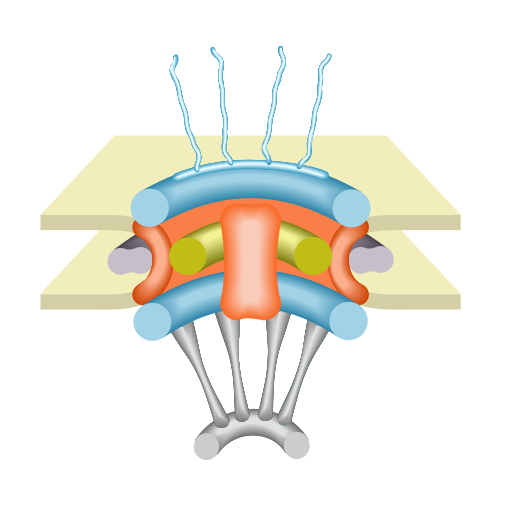Viruses! We all hate the colds we get in the fall that come with a cough, a runny nose, and a sore throat. These bugs have gone around since nursery school, so we were taught that viruses were transmitted through touching door knobs, getting coughed on, and touching someone who is sick. While these are how viruses are spread from person to person, the infection that occurs on a cellular level is much more complex.
For starters, only a handful of viruses are known to actually cause illness in humans, but the ones that do have adapted to do it very efficiently, and some are even known to cause cancer. Viruses that cause cancer include human papillomavirus, Kaposi Sarcoma-associated Herpesvirus, and Epstein-Barr virus. The way that these viruses get into the cells is very unique compared to the common cold virus, and a team at the University of Michigan Medical School decided to take a closer look at just how they invade to try and get a better grasp on how to prevent cancers caused by viruses in humans.
The virus they researched is called SV40 and it causes tumors in monkeys. The way that SV40 infects monkey cells is by burrowing itself through the cell membrane and then into its nucleus in order to duplicate itself. SV40 is used as a tool to understand how the cancer causing viruses work because of the biological similarities that monkeys and humans have. An earlier team studied how SV40 travels through the cell. It goes from the surface, through the endosome, the ER, and then enters the cytosol.
The most recent study illuminates the rest of the virus’ passage through the cell. The way SV40 gets into the nucleus is through the nuclear pore complex. This is how many viruses enter the nucleus, but the SV40 is too large to enter through this pore. The virus must disassemble in order to gain access to the nucleus. This process partially disassembles the virus into a smaller package made of two proteins and genetic material (DNA). As we have learned in class, the DNA is the macromolecule that codes for how to build the proteins that build the virus. When the DNA for the virus is connected with the two proteins, it uses both the nuclear pore complex and another complex called LINC. LINC connects the two membranes of the nucleus together. Many other viruses grab onto the little fingers sticking out of the nuclear pore complex (seen below), while SV40 seeks out LINC in order to get into the nucleus.
The difference in entrances between more common viruses and SV40 could be what makes SV40 cancer-causing. The next step is to research how SV40 exploits LINC in order to expand upon how other diseases could enter the nucleus, and hopefully find a way to trigger the immune system in order to expel or digest the viruses before it is too late.



Leave a Reply